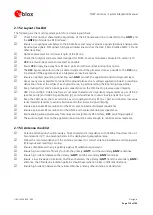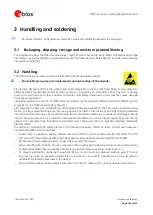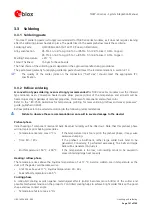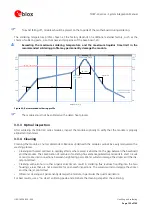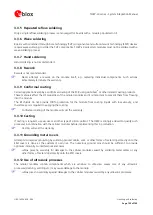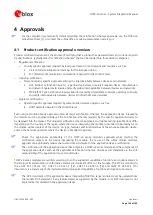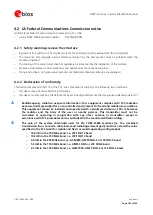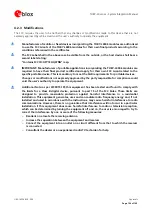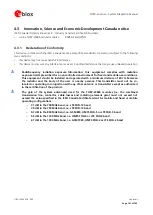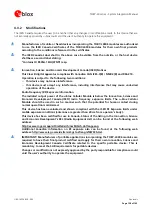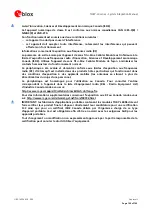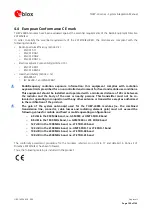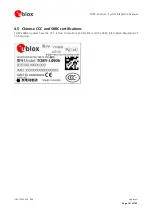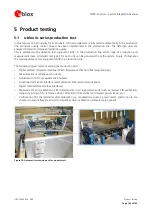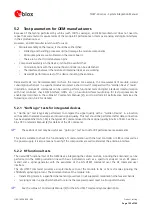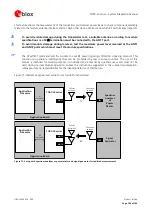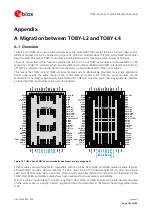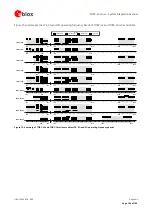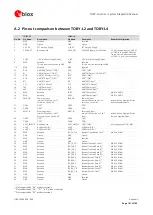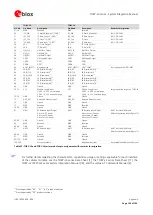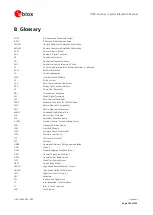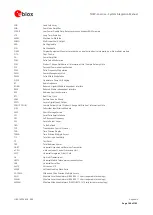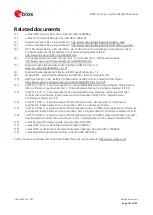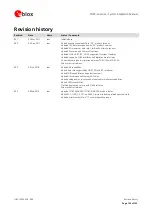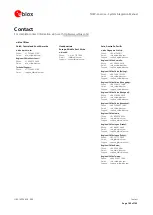
TOBY-L4 series - System Integration Manual
UBX-16024839 - R04
Product testing
Page 133 of 143
5.2
Test parameters for OEM manufacturers
Because of the testing performed by u-blox (with 100% coverage), an OEM manufacturer does not need to
repeat firmware tests or measurements of the module RF performance or tests over analog and digital interfaces
in their production test.
However, an OEM manufacturer should focus on:
Module assembly on the device; it should be verified that:
o
Soldering and handling processes did not damage the module components
o
All module pins are well soldered on the device board
o
There are no short circuits between pins
Component assembly on the device; it should be verified that:
o
Communications with the external host controller can be established
o
The interfaces between the module and external devices are working
o
Overall RF performance test of the device including the antenna
Dedicated tests can be implemented to check the device. For example, the measurement of module current
consumption when set in a specified status can detect a short circuit if compared with a “Golden Device” result.
In addition, module AT commands can be used to perform functional tests on digital interfaces (communication
with host controller, check SIM interface, GPIOs, etc.), on audio interfaces (audio loop for test purposes can be
enabled as described in the
[2]), and to perform RF performance tests (see the
following section 5.2.2 for details).
5.2.1
“Go/No go” tests for integrated devices
A “Go/No go” test is typically performed to compare the signal quality with a “Golden Device” in a location
with excellent network coverage and known signal quality. This test should be performed after data connection
has been established. AT+CSQ is the typical AT command used to check signal quality in term of RSSI. See the
u-
blox AT Commands Manual
[2] for details of the AT command.
These kinds of test may be useful as a “go/no go” test but not for RF performance measurements.
This test is suitable to check the functionality of communication with the host controller or SIM card as well as
the power supply. It is also a means to verify if the components are well soldered at the antenna interface.
5.2.2
RF functional tests
The overall RF functional test of the OEM device integrating the cellular module, including the antenna(s), can be
performed in the OEM production line with basic instruments such as a spectrum analyzer (or an RF power
meter) and a signal generator with the assistance of the AT+UTEST command over the AT command user
interface.
The AT+UTEST command provides a simple interface to set the module to Rx or Tx test modes ignoring the
LTE/3G/2G signaling protocol. The command can set the module into:
transmitting mode in a specified channel and power level in all supported modulation schemes and bands
receiving mode in a specified channel to returns the measured power level in all supported bands
See the
[2] for the AT+UTEST command syntax description.

